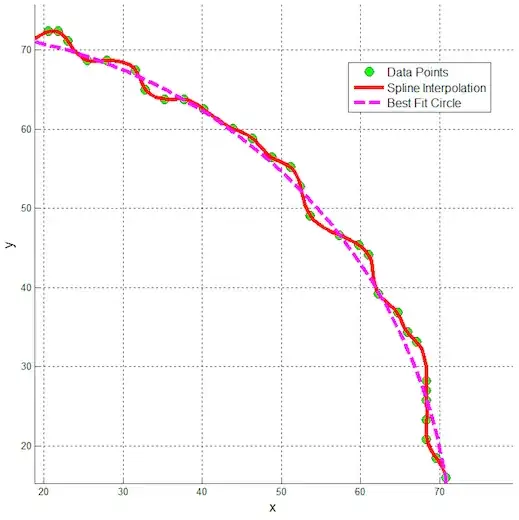I am looking to quantify the (for a lack of a better term) "wigglyness" of a parametric curve. The particular set of curves that I am looking at come from cubic-spline interpolation on a set of points that lie, more or less, on a section of a circle (see image at the bottom).
After interpolation, I have the parameterized coordinates $x(t)$ and $y(t)$, functions of arclength, and can also easily take their 1st and 2nd derivatives. The quantity I am looking to define, then, is the amount that the curve oscillates back and forth.
I have considered simply computing the best-fit circle and letting my quantity be the mean squared error, but the problem is that although the curve certainly looks circular, I would prefer to avoid using the assumption.
My current approach is to calculate the root mean square curvature over a large number of points on the curve, using the formula for the curvature of a parametric curve $$\kappa=\frac{x'y''-y'x''}{(x'^2+y'^2)^{3/2}}$$
This approach seems to work fairly well, but it does have the problem that it seems to be influenced a fair bit by the global shape of the curve rather than the smaller local perturbations; the mean value tends to be around $\frac{1}{r}$, where r is the radius of the best fit circle.
So finally, my question is: is there a quantity that better describes the local "wigglyness" of this type of curve, rather than the global shape?
EDIT:
While the link provided in the comments does look like a great technique (in particular, it appears to be better than my current method), it still does not get rid of the issue of the influence of the global geometry. That is to say, there will be some default 'energy' contributed due to the general shape of the arc, whereas I am only interested in the 'energy' due to the wiggles. Perhaps, sticking with the energy analogy, I can simply subtract off this default energy to obtain the quantity of interest?
